NATO Secretary General Mark Rutte has declared a significant step forward for the Alliance as Defence Ministers agreed a new set of capability targets, paving the way for major investment decisions at the NATO Summit in The Hague later this month.
“We agreed on an ambitious new set of capability targets,” said Rutte at NATO Headquarters on Thursday. “These targets describe exactly what capabilities Allies need to invest in over the coming years: air defence, fighter jets, tanks, drones, personnel, logistics and so much more. All of this is needed to keep our deterrence and defence strong and our one billion people safe.”
Speaking to the press after the final ministerial session, Rutte outlined what he called a “vital first step” towards reshaping NATO’s collective defences.
“I will propose an overall investment plan that would total 5% of GDP in defence investment,” he explained. “That includes 3.5% of GDP for core defence spending, and 1.5% for defence- and security-related investment like infrastructure and industry.”
“Prepare for war, spend more”
The new targets were described by several officials as a generational shift in how NATO plans to equip itself against mounting global threats. Fielding questions from attending journalists, Rutte did not shy away from the scale of what lies ahead.
“To prepare for war, spend more,” he said. “And when you are really prepared for war, you will not be attacked.”
Among the capabilities prioritised in the new targets: “air defence systems, long-range missiles, manoeuvrable land formations, and command and control systems.”
He stressed the need to address investment imbalances within the Alliance: “By doing this, we will also equalise what we are spending with what the United States is spending. We know this is important, because we want a fair NATO where all Allies spend the same.”
Ukraine support and defence production
There was also sustained focus on Ukraine across the two-day ministerial. NATO’s work with Kyiv was the subject of multiple sessions and off-record briefings, including a meeting of the NATO-Ukraine Council and the Ukraine Defence Contact Group, co-chaired by the UK and Germany.
“Minister Umerov highlighted the challenges on the battlefield, Russia’s continued attacks on civilian targets, and Ukraine’s ongoing pursuit of a negotiated peace,” said Rutte. “We all want to see this war brought to an end with a just and lasting peace. And we fully support President Trump’s urgent efforts to stop the bloodshed.”
He confirmed that Allies had pledged more than €20 billion in additional support to Ukraine this year alone.
The Secretary General was also pressed on industrial readiness. He acknowledged that increases in defence spending must be matched by an uptick in defence production capacity: “This is needed so that our militaries have the critical capabilities they need. This is good for our security, and by the way, also good for our economies.”
Ahead to the Hague
The decisions taken this week form the basis of a forthcoming NATO investment plan to be agreed at the Hague Summit.
“Sometimes people think The Hague will discuss a percentage of GDP spent on defence as if it’s something plucked from the air,” he told reporters. “That is not true. What we will decide in The Hague is rooted in the capability targets agreed today.”
Having just left NATO HQ after the press conference, it was clear there was a shared sense among those present — reporters, analysts and staff alike — that the stakes have rarely been higher for the cohesion and credibility of the Alliance.
Rutte concluded with a firm message: “NATO’s deterrence is strong today. And through the decisions we have taken at this Ministerial, we are making sure it remains strong for tomorrow.”
The press conference ended on a personal note as Rutte led Defence Ministers in bidding farewell to General Christopher Cavoli, the outgoing Supreme Allied Commander Europe, whose successor, General Alex Grynkewich, was confirmed by the North Atlantic Council this week.
“We are happy he will still be with us for the next few weeks,” said Rutte, before taking a final round of questions.



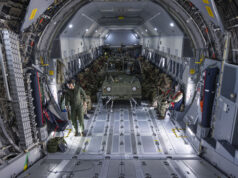

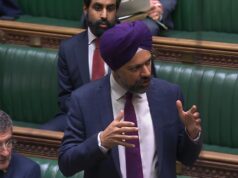

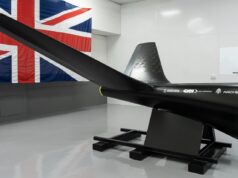
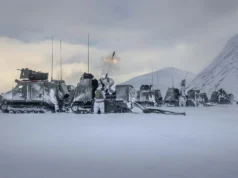

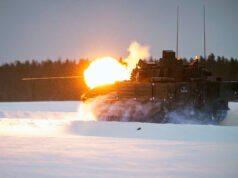
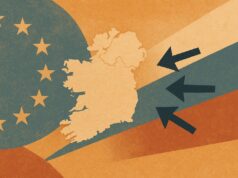
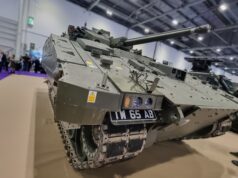

So, does this mean the UK government will HAVE to go to 3.5% by 2032?
I’d imagine it will be to meet a 3.5% mix by 32. We could do 3% direct, 0.4% defence/infrastructure related and 0.1% foreign military aid maybe?
I’d hope the 3% on own defence is the minimum by 2032 or we’ll slip back to 2.5%, fill in lots of potholes and do some very dodgy accounting with Ukraine and non-NATO aid.
By Presidential decree, “NATO” will now be called NATOG.
An official US government spokeswoman (Anna Gram) for Donald Trump was heard to say, “You know when you’ve been TANGO’d”.
(Any young persons here might like to “do a google” where all will be explained).
Starmer is going to love this. NATO proposal just a tad better than 3% by 2034 maybe,/if/perhaps and when we can.
Unfortunately, require some additional political and perhaps historical context re NATO rearmament process. Certainly understand the perspective of the political and informed citizenry classes of the frontline states (i.e., Baltic states, Greece, Poland, probably the Nordic countries), which will undoubtedly meet or exceed the revised NATO investment goals due to a conviction that at least the Russians are a clear and present existential danger. Then there is a group of ENATO countries which may reluctantly eventually meet the revised goals, though perhaps not on the proposed schedule (e.g., France, Germany, Turkiye, United Kingdom, etc.). Finally, there is a third grouping of countries which though they will endorse the revised goals, apparently/probably have no intention of ever fulfilling an agreed commitment (e.g., Canada, Italy, Spain, Portugal, etc.) Given this diversity of perspectives, which admittedly may be a consequence of geography and/or national history, how will ENATO function as a whole during mortal combat, when infinitely more than some coin of the realm is at stake? Especially, if the US is preoccupied by war in the I-P? What is the candid perspective of the frontline states toward the possible commitment/performance of the rest of NATO during a possible conflict? Will the frontline states demand a sovereign tactical nuclear response capability ultimately? Dunno, but certainly curious re the general topic…🤔
It is changing indeed: for the first Time since its creation, it’s headed by a child who miles to break toys.
Jules. You very much mis-describe Mark Rutte.
The backsliders are primarily in western Europere, Spain, Belgium, Portugal, Italy, with the UK, France, Netherlands short of where they shoild be.
Ome possible route to ‘encourage” them to play and pay for a more active part would be to task them to provide specific forces in specific theatres.
The role of the Eastern European nations will be to have sufficiently sizeable and well-armed forces in place to deter Rissian adventurism. The role of the westetn European nations will be to support them with EFP.forces, backed up by heavy armoured infantry reinforcements.
Would like see NATO stipulate that
To support Poland
… all of the western European nations required to position arm inf troops forward, in Ge4many to support Poland, in westetn Hungary to support the centre and in Bulgaria to support the Bslkan nations. With sill contributing to an EFP division in these three areas, as well as the Baltic republics and Finland.
It would be a NATO requirement that they provide the necessary forces. Organised and equipped to a standard format. To achieve this, they would have to resource it. Same with combat air.and force enablers.
Sitting in Spain or Belgium or other westetn nations, thinking the front line is miles away and we can backslide would change rather rapidly if they had to position a brigade or division and a portion of corps troopsforward in Central and Eastern Europe and provide a specific umber equipped to a specific standard.
Cripes,
Certainly an intriguing concept. Quite frankly, never contemplated a Portuguese or Spanish Corps or indeed even a Division. 🤔
FormerUSAF, the Spanish Army actually has two divisions, although perhaps not organised along the best lines. They have 4 Armoured Brigades, 3 Light Armoured Brigades, a small Mountain Infantry Group and a few static formations for their overseas territories. As it stands I believe they have a “Rapid Intervention Division” consisting of an Airmobile Light Armoured Brigade, the Mountain Infantry Group, SOF, and a Aviation Brigade, while the remaining 6 Brigades are all just lumped under their 2nd Divisional HQ. Obviously this isn’t a Warfighting Orbat, but, as long as the kit is servicable, Spain could probably get 2 Divisions of 3 Brigades each out the Door, and forward deploy a Brigade as part of a Multinational Division.
(Also worth noting that Spain already does provide one of the EFP battalions in Slovakia, frankly I don’t think that committing a Brigade vs a Battalion really nails anyone’s trousers to the mast, they just end up hollowing out the home force to keep the deployed brigade up to snuff).
Portugal can kind of muster a Division. It has 3 “Brigades,” a Airborne Brigade, which is probably it’s beefiest formation, a small Mechanised Brigade and an Armoured Brigade that’s probably more like a large Armoured Battlegroup in size. But no Divisional HQ, and probably not the support elements to enable divisional activities. (But also Portugal is a tiny economy and even if they increased their spending to 3.5% they’d still only be in the 9billion USD per anum range).
To be honest I would have thought that given Portugals small economy and geographic location, their best contribution to overall NATO defences would be to concentrate on sea and air projecting out in to the Atlantic than sending small numbers of troops to the other side of the continent?
Portugal has 2 Submarines and 5 small Frigates, with a personnel count of 8,000 compared to the Army’s 14,000 you could argue it already does.
On the other hand I always point out that not sending troops to Eastern Europe really isn’t an option, and the Portugese Army would be expected to contribute what it can.
The US cannot possibly spend 5% of GDP, primarily on or in the NATO region of Euro-Atlantic. Much of their spend will be in the I/P.
The US will get around that fact by ignoring it.
“To prepare for war, spend more, and when you are really prepared for war, you will not be attacked.”
There is an profound logic to that. I read somewhere, I forget where, that democracies are by definition, ill equip to fight a peer conflict. Tanks & Planes are slow in gestation, warships even slower, so its show up as you are.
In times of peace, prepare for war etc.
When USSR collapsed, Russia should have been assimilated into European union. But the West needs an enemy to con tax payers for billions$ in Defense spending. Europe really has no enemies, but insist on Russia being a threat. Logically, Russia could have been the counter balance to China, India, Islam. But under USSR control during the Cold war left doubts and Russia being constantly invaded has fears. – – Napoleon and Hitler caused many millions of Russian deaths. Asia always laughs at the quarreling Europeans, those Yahoos always have reasons for major war, seems like ‘ cracking eggs at the wrong end’ is sufficient.
“Europe has no enemies but insists on Russia being a threat”
Yeah no.
Transnistria ’90, Georgia 91, Chechna 94, Chechna 99, Georgia 08, Ukraine ’14, Ukraine ’22
Those poor Russians, always being forced to invade their neighbours.